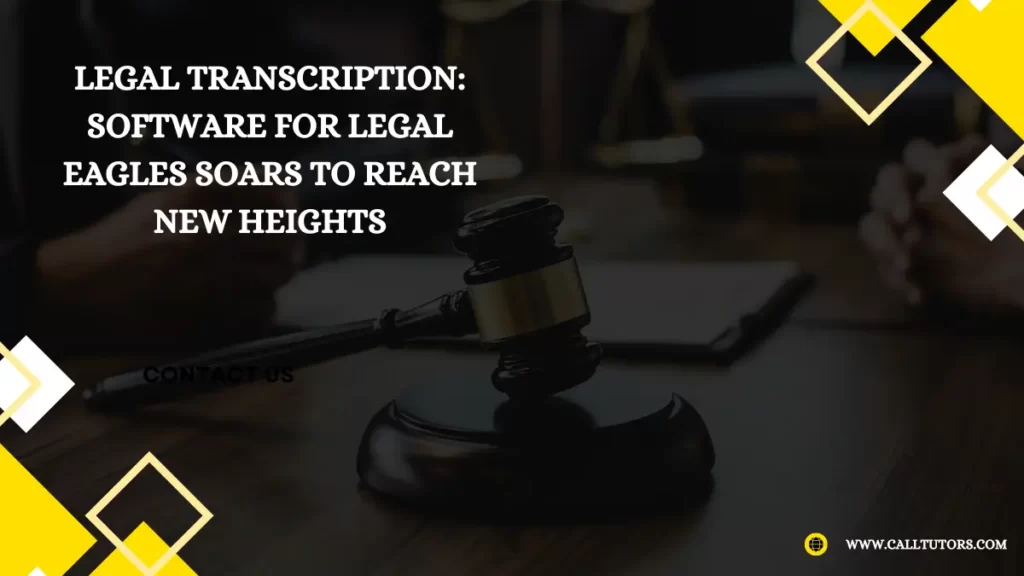Legal Transcription: While we’re on the subject of birds of prey, fans of classic cinema might know of a great movie from 1941, starring Humphrey Bogart – ‘The Maltese Falcon’. Bogart plays a private eye, Sam Spade, who constantly skates on thin ice close to illegality – who has an even thinner relationship with his city’s police force. In one scene, the cops interview Spade as they think he knows the identity of a murderer but is withholding evidence from them. With his typical wisecrack patter, Spade effortlessly shrugs off the cops’ allegations:
“Yeah, I might have a guess at it… but Mrs. Spade didn’t raise any children dippy enough to make guesses in front of a district attorney, an assistant district attorney, and a stenographer!”
And there’s the magic word. ‘Stenographer’. Stenographers – who must be members of the American Association of Electronic Reporters and Transcribers (AAERT) – use ‘Stenotype’ machines in courtrooms to this day. They are still seen as irrefutable evidence of verbatim transcriptions of court testimonies and are backed up by traditional voice recording equipment.
But the days of legal transcription being recorded in this way are numbered with the advent of AI-powered software that outperforms human transcriptions at many times human speed, together with many AI-added facilities. Modern SaaS (Software as a Service) platforms can now allow instant search and find not only by keyword but even by general concept, as well as allowing rapid document summarization and ambiguity detection. And that’s just for starters.
Space, the final frontier…
Table of Contents
To take a step backward for a moment, if you think about the general concept of transcription, dictation, and voice / audio-to-text computer systemization facilities, they’ve all been around for a long time. Referring again to classic entertainment, fans of the original ‘Star Trek series could point to an episode from the late 1970s where Scotty, the USS Enterprise’s chief engineer, was beamed into Earth’s history and ended up captured by baddies at a time when computers had large cathode ray tube monitors with green screens and very chunky keyboards.
Scotty’s captors ordered him to find something on their computer to give them a military advantage using some sort of weapons development technique. Scotty was led into a room in handcuffs and instructed to get to work. He stood in front of a Sinclair 64k vintage machine and said: “Computer, find all the records on nuclear fission from the reactor database…”
The captors were nonplussed and said to Scotty: “No, no. You have to use the mouse!”, handing the device to him.
“Sorry,” said Scotty, who promptly picked up the mouse as if it were a microphone and spoke into it: “Computer, find all the…”
It was a very amusing scene, but with serious premonitory overtones of things to come. Talking to Siri and Amazon’s Alexa is now a commonplace daily thing, even asking your assistant of choice to close your living room curtains or find a particular TV show.
Also, software packages like MS Word have had dictation facilities for years, and of course, computer voice synthesis likewise has been around for just as long. Take the late Prof Stephen Hawking as a case in point, who could voice his conversations by simply blinking in predetermined patterns into a lens linked to a simple PC under his wheelchair seat. That was back in the 1980s.
So much more than just transcription
So it’s no surprise that 2020’s tech is pushing the boundaries of transcription and summarization. But more importantly, perhaps, it’s what NLU (Natural Language Understanding), NLG (Natural Language Generation) and NLP (Natural Language Processing) algorithms can do with textual information once it has been parsed from audio. Let’s take a look at just the most popular facilities:
Question Answering
NLU combined with AI-driven algorithms can return a succinct natural language answer to any question posed, rather like the ChatGPT facility produced by software company openAI.
Tag Generation
Once spoken voice is converted to textual information, algorithms can suggest tags for a body of text, which is useful for determining keywords and assigning subjects, especially when legal document software is being used.
Ambiguity and Contradiction Detection
Given a body of text, NLP can return any passages which might contain contradictions or ambiguities; perhaps those arising from word sense and pronoun issues.
Generating Q&A
NLP can produce a list of questions and answers from a selected body of text; whereby declarative statements can be extracted from the text and rephrased into questions, where the answer is the original statement. When combined with a learning platform using memory-enhancing graphical interfaces, this could be particularly useful for, say, legal students cramming for exams.
Paraphrasing & Simplification
NLP algorithms can paraphrase a body of text according to the level of complexity required; simplifying such text can alter the wording for it to be better understood by a user, without losing any information or changing the meaning. This could be particularly useful in legal/medical texts, where certain terms could be paraphrased for laypersons to understand their meaning without having to spend several weeks trawling Google!
The future of legal transcription is here today.
In summary, having looked at just some of the things that can be achieved in microseconds at the click of a mouse, after a person’s court appearance or legal deposition, it won’t be long before lawyers and juries will just ‘cut to the chase’ with an AI summarization of a person’s transcribed content.
As with all technology, there are security implications, especially if and when such transcriptions are transferred by the Internet and e-mail. Whether that’s a good thing or not is fuel for a whole separate conversation, but one thing is certain: it’s going to happen within a decade. You can bet your law degree on it!


